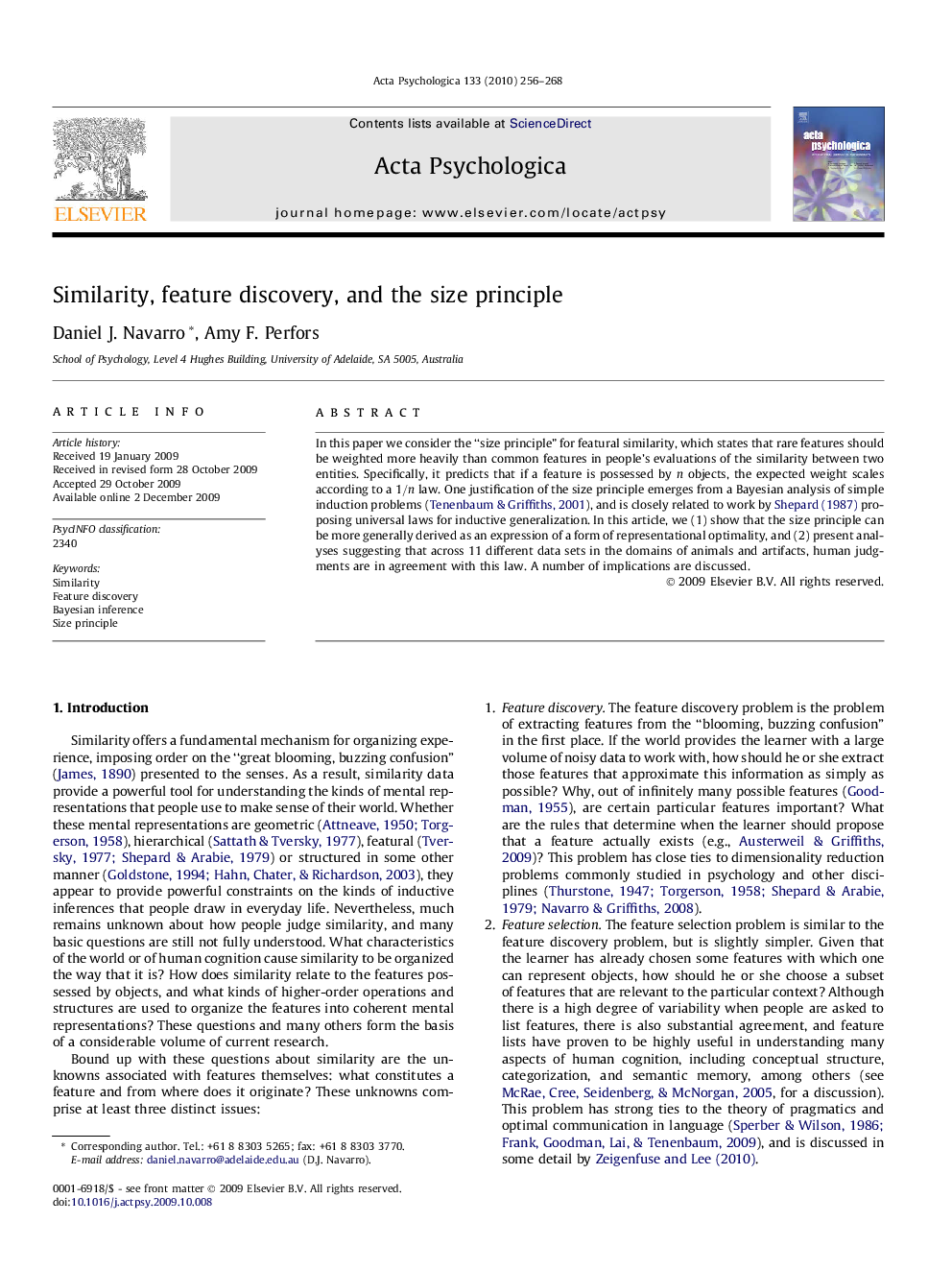| Article ID | Journal | Published Year | Pages | File Type |
|---|---|---|---|---|
| 920269 | Acta Psychologica | 2010 | 13 Pages |
In this paper we consider the “size principle” for featural similarity, which states that rare features should be weighted more heavily than common features in people’s evaluations of the similarity between two entities. Specifically, it predicts that if a feature is possessed by n objects, the expected weight scales according to a 1/n1/n law. One justification of the size principle emerges from a Bayesian analysis of simple induction problems ( Tenenbaum and Griffiths, 2001a and Tenenbaum and Griffiths, 2001b), and is closely related to work by Shepard (1987) proposing universal laws for inductive generalization. In this article, we (1) show that the size principle can be more generally derived as an expression of a form of representational optimality, and (2) present analyses suggesting that across 11 different data sets in the domains of animals and artifacts, human judgments are in agreement with this law. A number of implications are discussed.
